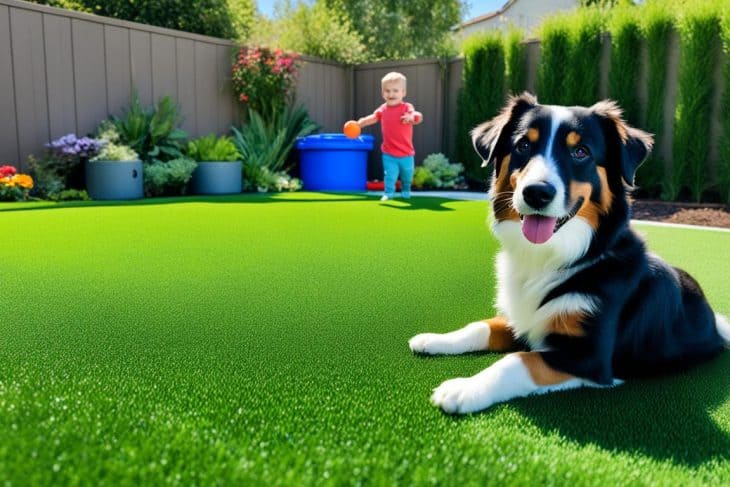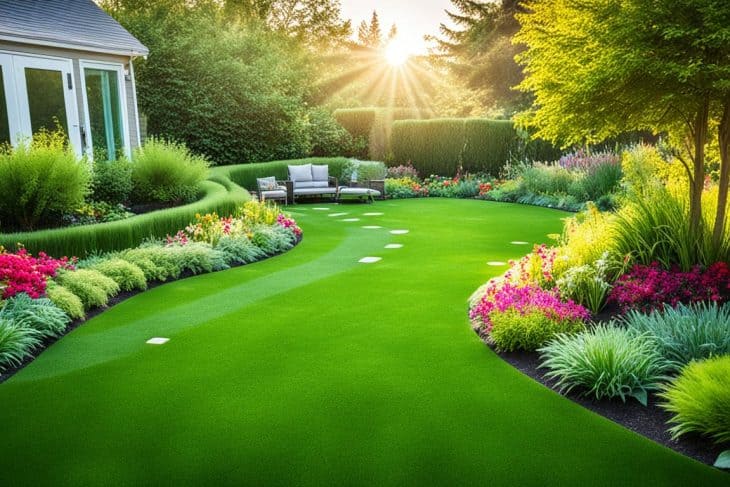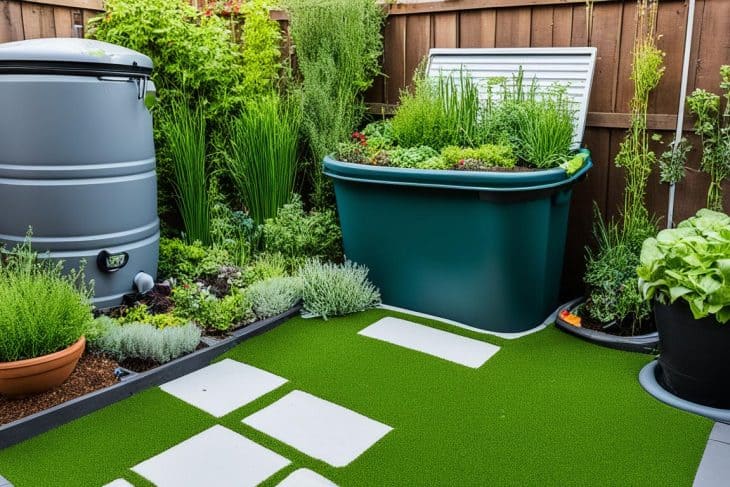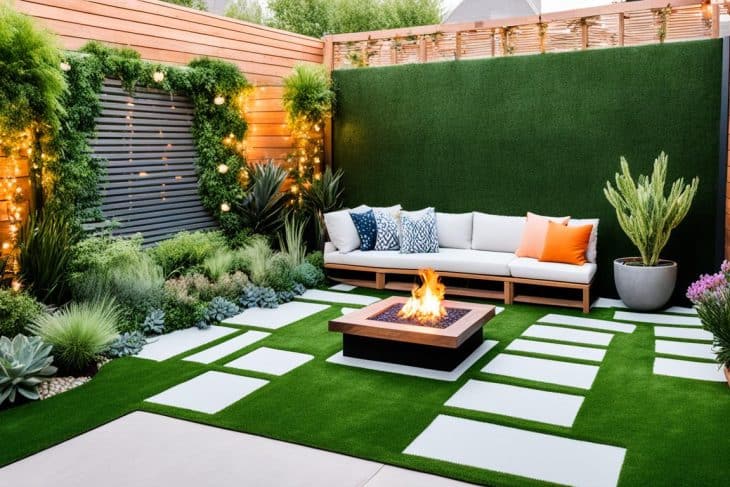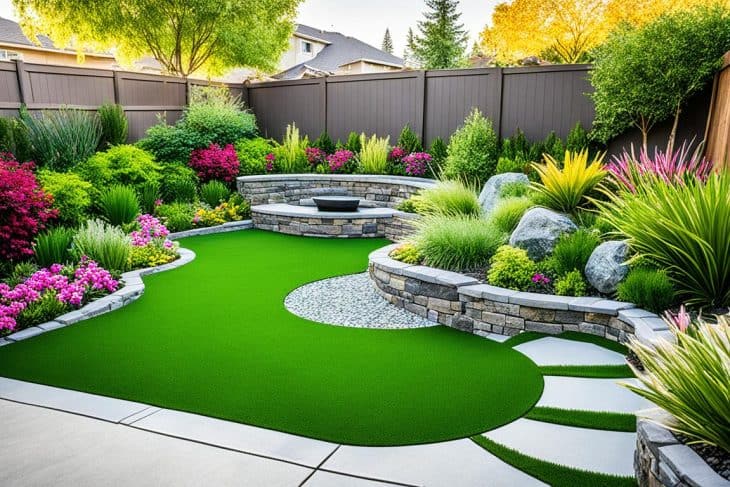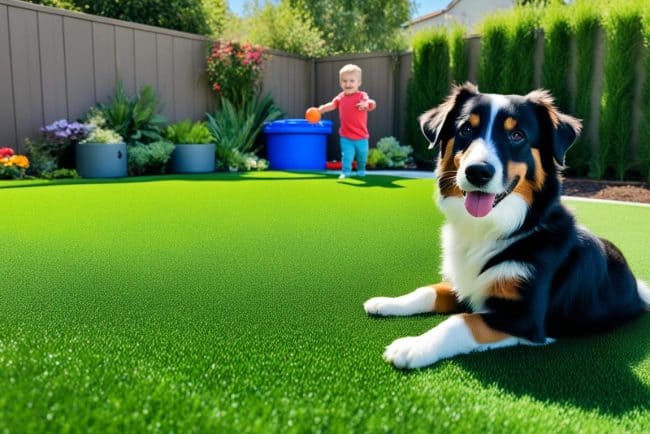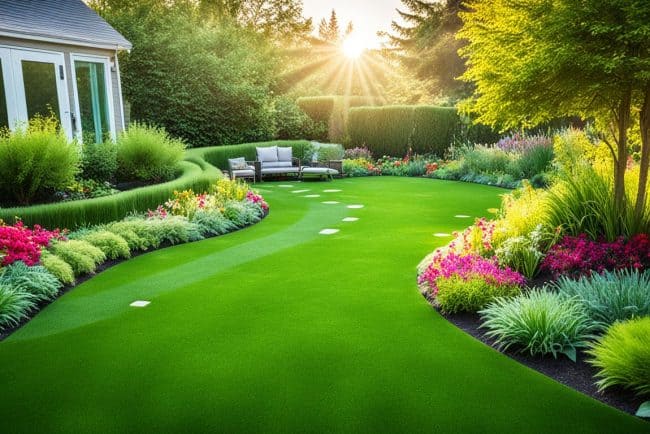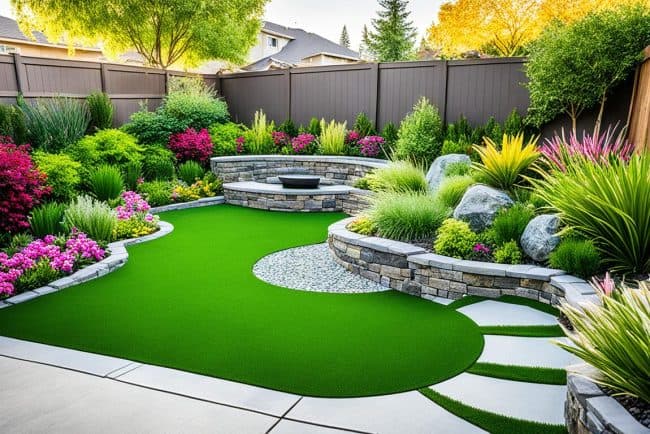
Did you know eco-friendly artificial grass can save a ton of water? Up to 22,000 gallons each year, in fact. This is just one amazing benefit of choosing sustainable turf. Homeowners and businesses are now turning to artificial grass. It’s a top pick for anyone wanting a great looking lawn without using much water or chemicals. I can’t wait to show how this fantastic option can make yards better for the planet.
By picking artificial grass, I’m making my outdoor area look good and helping the earth. This article will cover what makes eco-friendly turf special, its good points for the environment, how strong it is, and how to get a lovely, green yard that lasts.
Key Takeaways
- Artificial grass can save up to 22,000 gallons of water annually.
- Choosing artificial grass minimizes the use of harmful pesticides and fertilizers.
- Synthetic turf enhances the beauty of landscapes with low maintenance.
- The long lifespan of eco-friendly grass can last up to 25 years.
- Switching to artificial grass significantly reduces carbon emissions from lawn maintenance equipment.
Understanding Eco-Friendly Artificial Grass
The world of landscaping often brings up eco-friendly artificial grass. Known as synthetic turf, it offers a green solution. It looks and feels like natural grass but is durable and easy to maintain. That’s why it’s a top choice in many places.
Definition and Features
Eco-friendly artificial grass aims to be kind to the planet while looking great. It’s big on saving water, which is essential. No need for daily watering means less water use and cheaper bills.
Materials Used in Eco-Friendly Turf
Today’s earth-friendly turf uses new, plant-based materials. Things like sugar cane and soybeans are now in the mix instead of bad plastics. Look for the USDA certification for peace of mind. It shows these products are free from nasty chemicals, making them safe for all.
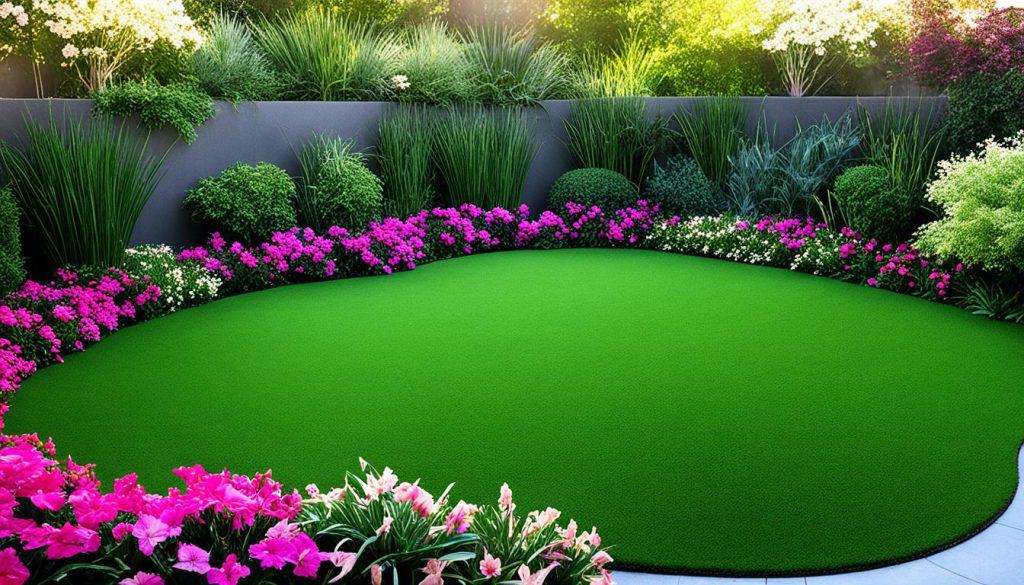
Environmental Benefits of Artificial Grass
Artificial grass has many benefits for both our wallets and the Earth. These include saving water and using fewer harmful chemicals. Grasping these benefits helps us see the big change switching can make.
Water Conservation and Reduced Bills
Artificial grass is great for saving water. The EPA says we use lots of water outside, sometimes 60% of our total use. By using artificial turf, homeowners can save a lot. They might save up to 22,000 gallons of water each year.
This means lower water bills and help for dry areas like San Diego. It shows that artificial grass is a smart pick for saving water and money.
Lower Carbon Emissions
Artificial grass also means fewer carbon emissions. Regular lawns need gas-powered mowers which pollute the air. A gas lawn mower working for an hour is like driving a car for 200 miles.
By choosing synthetic grass, we cut down on using these tools. This action reduces air pollutants and helps keep the air clean. It’s a step towards being more eco-friendly.
Decrease in Harmful Chemicals
Another big plus of artificial grass is using fewer chemicals. Real lawns need stuff like fertilizers and pesticides. But synthetic lawns don’t. This is better for our families, pets, and local animals.
By picking artificial turf, we cut down on chemicals. We also help create a safe outdoor space. This is good for all living things and makes our ecosystem richer.
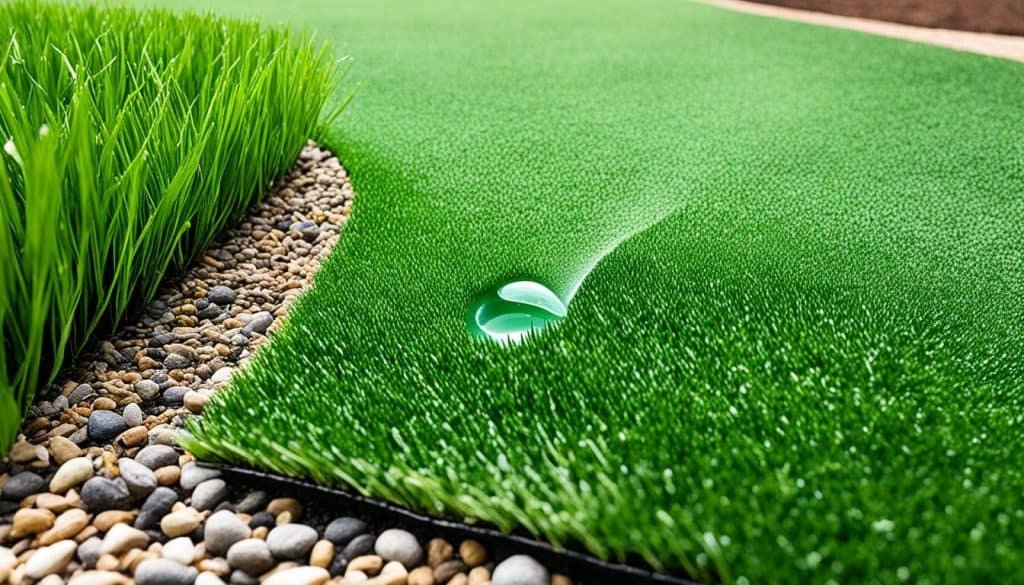
| Environmental Benefits | Impact |
|---|---|
| Water Conservation | Potential savings of up to 22,000 gallons of water annually |
| Carbon Emissions | Reduces reliance on gas-powered equipment, improving air quality |
| Harmful Chemicals | Minimal to no use of pesticides and fertilizers, enhancing safety |
Maintenance and Durability of Eco-Friendly Turf
The upkeep of my lawn led me to see the value in eco-friendly turf. It needs less work than regular grass, making my yard look good without much effort.
Low-Upkeep Characteristics
Eco-friendly turf stands out because it barely needs care. No more mowing, watering, or chemicals like with natural grass. A quick brush and rinse now and then keep it fresh. It’s why people looking for green gardens pick it.
Longevity and Lifespan
Eco-friendly turf also lasts a long time, up to 25 years. This long life, combined with easy care, provides great value. It’s also made with 100% recyclable materials, showing care for the environment.
To go over its benefits, the table below shows what eco-friendly turf needs:
| Feature | Durable Artificial Grass | Natural Grass |
|---|---|---|
| Maintenance Frequency | Rarely needed | Regular grooming weekly |
| Water Requirement | Minimal | High – up to 30% of residential water use |
| Lifespan | Up to 25 years | Usually around 10-15 years |
| Environmental Impact | 100% recyclable | Requires chemicals for optimal health |
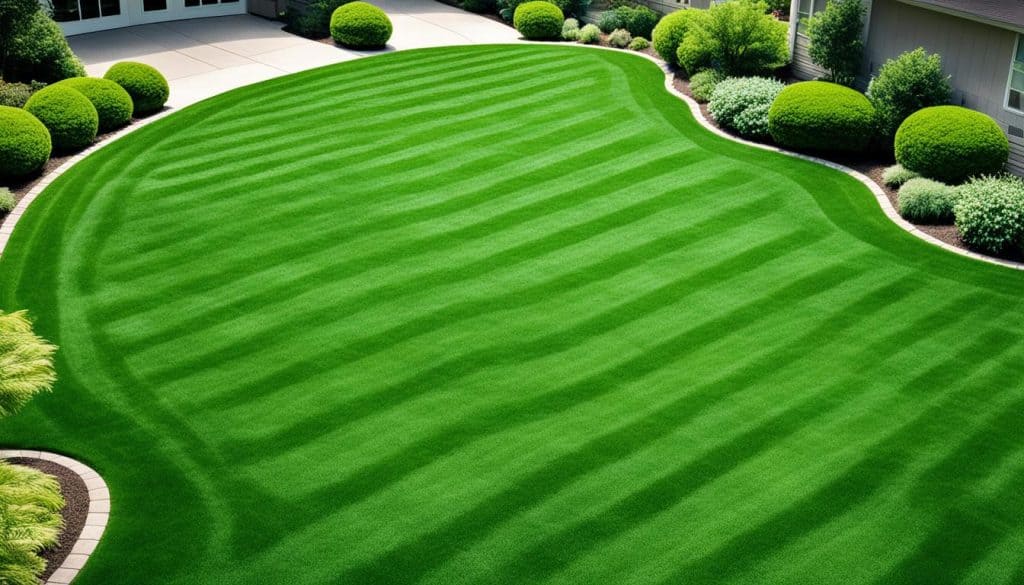
This turf is easy to keep and lasts long. It fits well with wanting a garden that’s good for the planet.
Installation Steps for Your Environmentally Friendly Yard
To start making your yard eco-friendly with artificial grass, you’ll first need to prepare. This means getting rid of any grass, weeds, rocks, or debris. Making sure the ground is flat and clean makes laying down new turf easier. It also helps your artificial grass look better right from the start.
Clearing and Preparing the Area
After the area is clear and ready, the next key step is to lay a strong base. I use crushed rock or gravel to make a solid foundation. This helps with drainage and keeps the turf stable, especially in high-traffic areas. Making sure the base is just right is important for keeping your artificial grass good as new for longer.
Creating a Solid Mentain Base Layer
With the base set, I focus on laying the turf properly. It’s crucial to roll out the grass carefully to avoid wrinkles. Using landscape staples, I ensure the grass stays in place. I then add infill to make the turf more comfortable and stable. By following these steps, I make sure my green yard stays beautiful for many years.

